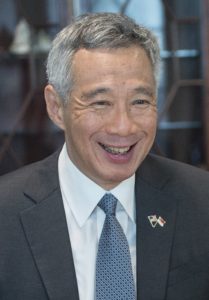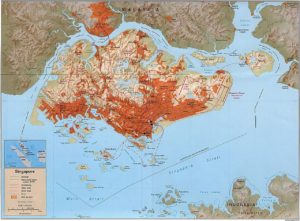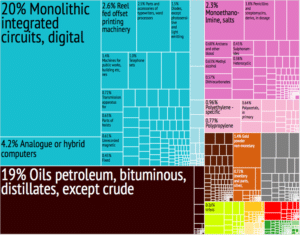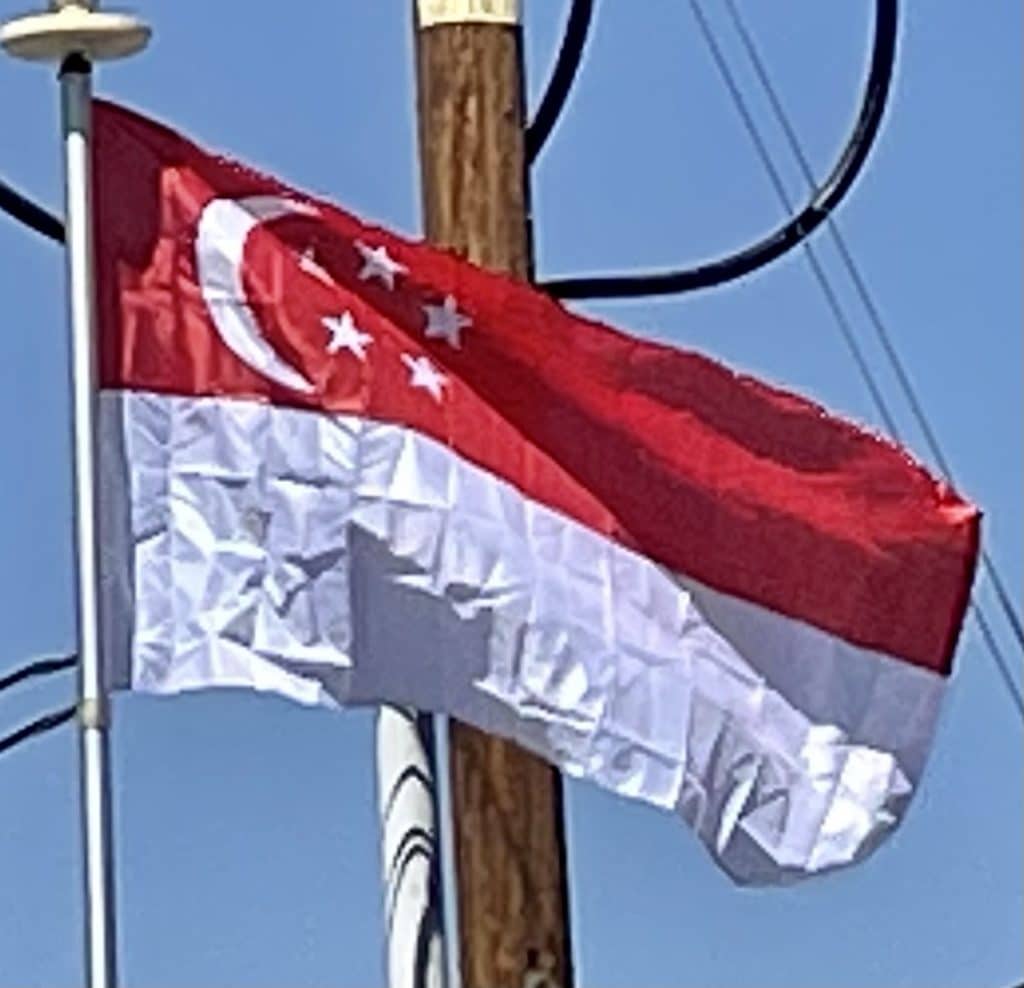
Lee Hsien Loong’s tenure included the 2008 global financial crisis, the resolution of a dispute over land ownership at Tanjong Pagar railway station between Singapore and Malaysia, and the introduction of the 2 integrated resorts (IRs), located at the Marina Bay Sands and Resorts World Sentosa. The People’s Action Party (PAP) suffered its worst ever electoral results in 2011, winning just 60% of votes, amidst debate over issues including the influx of foreign workers and the high cost of living. On 23 March 2015, Lee Kuan Yew died, and a one-week period of public mourning was observed nationwide. Subsequently, the PAP regained its dominance in Parliament through the September general election.
Geography:
Singapore consists of 63 islands, including the main island, Pulau Ujong. There are two-man-made connections to Johor, Malaysia: the Johor–Singapore Causeway in the north and the Tuas Second Link in the west. Jurong Island, Pulau Tekong, Pulau Ubin and Sentosa are the largest of Singapore’s smaller islands. The highest natural point is Bukit Timah Hill at 163.63 m (537 ft). Under British rule, Christmas Island and the Cocos Islands were part of Singapore, but both were transferred to Australia in 1957. Pedra Branca is the nation’s easternmost point.

Land reclamation projects have increased Singapore’s land area from 580 km2 (220 sq mi) in the 1960s to 710 km2 (270 sq mi) by 2015, an increase of some 22% (130 km2). The country is projected to reclaim another 56 km2 (20 sq mi) by 2030. Some projects involve merging smaller islands through land reclamation to form larger, more functional and habitable islands, as has been done with Jurong Island. The type of sand used in reclamation is found in rivers and beaches, rather than deserts, and is in great demand worldwide. In 2010 Singapore imported almost 15 million tons of sand for its projects, the demand being such that Indonesia, Malaysia, and Vietnam have all restricted or barred the export of sand to Singapore in recent years. As a result, in 2016 Singapore switched to using polders for reclamation, in which an area is enclosed and then pumped dry.
Economy:
Singapore has a highly developed market economy, based historically on extended entrepôt trade. Along with Hong Kong, South Korea, and Taiwan, Singapore is one of the Four Asian Tigers, but has surpassed its peers in terms of Gross Domestic Product (GDP) per capita.

Between 1965 and 1995, growth rates averaged around 6 per cent per annum, transforming the living standards of the population.
Transportation:
Singapore has a road system covering 3,356 kilometers (2,085 mi), which includes 161 kilometers (100 mi) of expressways. As Singapore is a small island with a high population density, the number of private cars on the road is restricted to curb pollution and congestion. Car buyers must pay for duties one-and-a-half times the vehicle’s market value, and bid for a Singaporean Certificate of Entitlement (COE), which allows the car to run on the road for a decade. Car prices are generally significantly higher in Singapore than in other English-speaking countries. As with most Commonwealth countries, vehicles on the road and people walking on the streets keep to the left.
